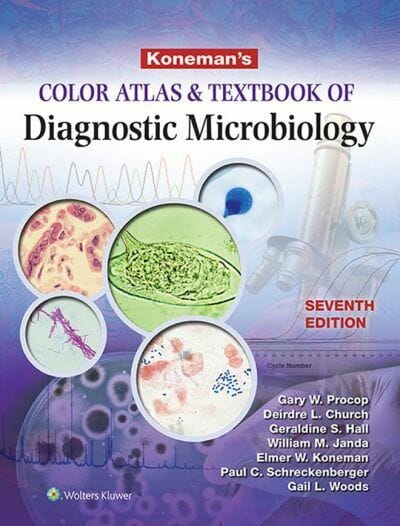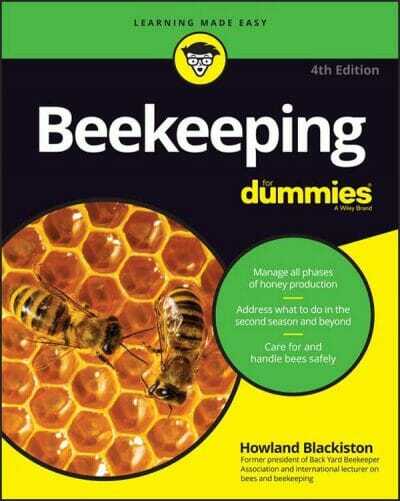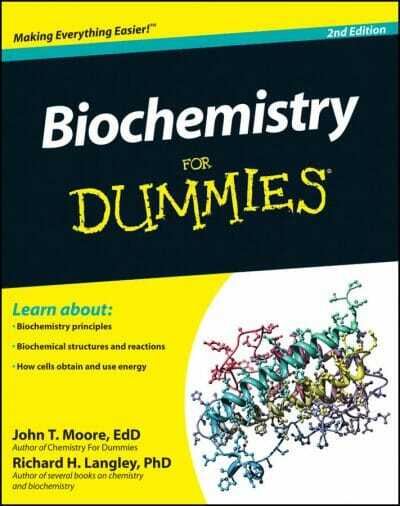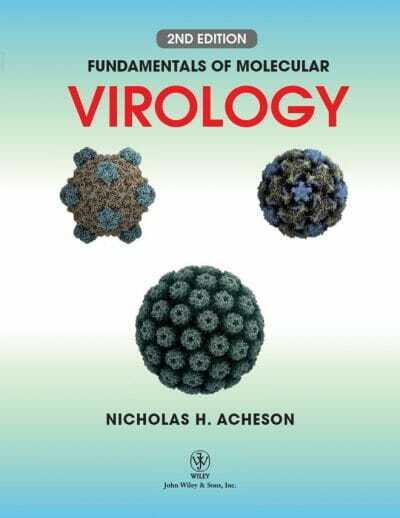Foreword v
Introduction 1
About This Book 1
Foolish Assumptions 3
Icons Used in This Book 3
Beyond the Book 4
Where to Go from Here 5
Part 1: Taking Flight with Beekeeping 7
Chapter 1: To Bee, or Not to Bee? 9
Discovering the Benefits of Beekeeping 10
Harvesting liquid gold: Honey 11
Bees as pollinators: Their vital role to our food supply 11
Being part of the bigger picture: Save the bees! 13
Getting an education: And passing it on! 13
Improving your health: Bee therapies and stress relief 15
Determining Your Beekeeping Potential 16
Environmental considerations 16
Zoning and legal restrictions 16
Costs and equipment 17
How many hives do you need? 17
What kind of honey bees should you raise? 17
Time and commitment 18
Beekeeper personality traits 18
Allergies 19
Deciding Which Beekeeping Approach to Follow 19
Medicated beekeeping 20
Natural beekeeping 20
Organic beekeeping 21
Combining approaches 21
Chapter 2: Getting to Know Your Honey Bees 23
Basic Body Parts 24
Skeleton 24
Head 25
Thorax 26
Abdomen 27
The Amazing Language of Bees 27
Pheromones 27
Shall we dance? 28
Getting to Know the Male and the Two Female Castes 29
Her majesty, the queen 30
The industrious little worker bee 32
House bees 33
Housekeeping (days 1 to 3) 33
Undertaking (days 3 to 16) 33
Working in the nursery (days 4 to 12) 34
Attending royalty (days 7 to 12) 34
Going grocery shopping (days 12 to 18) 34
Fanning (days 12 to 18) 34
Becoming architects and master builders (days 12 to 35) 36
Guarding the home (days 18 to 21) 36
Field bees 36
The woeful drone 37
The Honey Bee Life Cycle 39
Egg 39
Larva 41
Pupa 41
Other Stinging Insects 43
Bumblebee 44
Carpenter bee 44
Mason bee 45
Wasp 45
Yellow jacket 46
Bald-faced hornet 47
Part 2: Starting Your Adventure 49
Chapter 3: Alleviating Apprehensions and Making Decisions 51
Overcoming Sting Phobia 52
Knowing what to do if you’re stung 53
Watching for allergic reactions 54
Building up a tolerance 54
Understanding Local Laws and Ordinances 54
Easing the Minds of Family and Neighbors 55
Location, Location, Location: Where to Keep Your Hives 56
Knowing what makes a perfect bee yard 57
Urban considerations 59
Dealing with nervous neighbors 59
City bees have the same needs as country bees 59
Deciding where to put your hives 59
Strike a deal with a community garden 60
Speak to your landlord about roof rights 60
Providing for your thirsty bees 60
Understanding the correlation between geographical area and honey flavors 63
Knowing When to Start Your Adventure 64
Chapter 4: Selecting a Hive That’s Perfect for You 65
The Langstroth Hive 66
The Kenyan Top Bar Hive 68
The Warré (People’s) Hive 71
The Flow Hive 74
The Five-Frame Nuc Hive 77
The Observation Hive 79
Make a Beeline to the Best Beehive 81
Hives for harvesting honey 82
Hives for pollinating your garden 82
A hive for learning and teaching 82
Chapter 5: Basic Equipment for Beekeepers 85
Starting Out with the Langstroth Hive 86
Knowing the Basic Woodenware Parts of the Langstroth Hive 86
Hive stand 87
Bottom board 87
Entrance reducer 89
Deep-hive body 89
Queen excluder 90
Shallow or medium honey super 91
Frames 92
Foundation 95
Inner cover 98
Outer cover 99
Knowing the Basic Parts of a Top Bar Hive 99
The top bar 100
Everything else 101
Ordering Hive Parts 101
Startup hive kits 102
Setting up shop 102
Adding on Feeders 104
Hive-top feeder 104
Entrance feeder 105
Pail feeder 106
Baggie feeder 107
Frame feeder 108
Top Bar hive feeders 109
Fundamental Tools 110
Smoker 110
Hive tool and frame lifter 111
Bee-Proof Clothing 112
Veils 112
Gloves 112
Really Helpful Accessories 114
Elevated hive stand 114
Frame rest 116
Bee brush 117
Slatted rack 117
Screened bottom board 118
Beekeeper’s toolbox 119
Chapter 6: Obtaining and Installing Your Bees 121
Determining the Kind of Bee You Want 121
Deciding How to Obtain Your Initial Bee Colony 124
Ordering package bees 124
Buying a “nuc” colony 126
Purchasing an established colony 127
Capturing a wild swarm of bees 128
Picking a Reputable Bee Supplier 128
Deciding When to Place Your Order 130
The Day Your Girls Arrive 131
Bringing home your bees 132
Recipe for sugar syrup 132
Putting Your Bees into the Hive 133
Hiving steps for Langstroth hives and Steps 1–7 for Top Bar hives 134
Hiving Steps 8–14 for Top Bar hives 139
Watching your bees come and go from their new home 140
Part 3: Time for a Peek 143
Chapter 7: Opening Your Hive 145
Establishing Visiting Hours 146
Setting an Inspection Schedule 146
Preparing to Visit Your Langstroth or Top Bar Hive 147
Making “non-scents” a part of personal hygiene 147
Getting dressed up and ready to go 147
Lighting Your Smoker 148
Opening a Langstroth Hive 151
Removing the hive-top feeder 153
Removing the inner cover 155
Opening a Top Bar Hive 156
The Hive’s Open! Now What? 158
Chapter 8: What to Expect When You’re Inspecting 159
Keeping a Journal 160
Inspecting a Langstroth Hive 161
Removing the first frame of your Langstroth hive 161
Working your way through the Langstroth hive 162
Holding up frames for inspection 163
Knowing when it’s time for more smoke 164
Replacing Langstroth frames 165
Closing the Langstroth hive 165
Inspecting a Top Bar Hive 166
Working your way through the Top Bar hive 167
Top Bar comb management 168
Looking into Top Bar cells 170
Replacing the top bars and closing the hive 170
Understanding What to Always Look For 170
Checking for your queen 170
Storing food; raising brood 171
Inspecting the brood pattern 171
Recognizing foodstuffs 172
Your New Colony’s First Eight Weeks 172
Checking in: A week after hiving your bees 172
Verifying that the queen was released 173
Removing any burr comb 173
Looking for eggs 174
Replacing the missing frame of the Langstroth 174
Providing more syrup 174
The second and third weeks 174
Looking for larvae 175
Evaluating your queen 175
Hunting for capped brood 176
Looking for supersedure cells 176
Provide more syrup 177
Weeks four through eight 177
Adding a second deep-hive body to your Langstroth hive 178
Witnessing a miracle! 178
Watching for swarm cells 179
Providing more ventilation 179
Manipulating the frames of foundation 180
Making room for honey! 180
Inspecting your multilevel Langstroth hive 181
Chapter 9: Different Seasons, Different Activities 183
Lazy, Hazy, Crazy Days of Summer 184
Your summer to-do list 185
Your summertime commitment 185
Falling Leaves Point to Autumn Chores 186
Your autumn to-do list 186
Your autumn time commitment 191
Clustering in a Winter Wonderland 191
Your winter to-do list 192
Your winter time commitment 192
Spring Is in the Air (Starting Your Second Season) 193
Your spring to-do list 193
Your springtime commitment 195
Administering spring medication 195
Reversing hive bodies 196
Managing Top Bar Hives in the Spring 197
Finding the cluster 198
Preventing the urge to swarm 198
Expanding the brood nest 199
The Beekeeper’s Calendar 199
Part 4: Common Problems and Simple Solutions 203
Chapter 10: Anticipating and Preventing Potential Problems 205
Running Away (to Join the Circus?) 206
Swarming 206
Understanding why you want to prevent swarming 208
Keeping the girls from leaving home 208
They swarmed anyway Now what? 211
Capturing a swarm 213
Hiving your swarm 215
Absconding 216
Where Did the Queen Go? 217
Letting nature take its course 218
Ordering a replacement queen 218
Introducing a new queen to the hive 218
Avoiding Chilled Brood 220
Dealing with the Dreaded Robbing Frenzies 221
Knowing the difference between normal and abnormal (robbing) behavior 221
Putting a stop to a robbing attack 222
Preventing robbing in the first place 222
Ridding Your Hive of the Laying Worker Phenomenon 224
How to know if you have laying workers 224
Getting rid of laying workers 224
Preventing Pesticide Poisoning 226
The “Killer Bee” Phenomenon 227
What are “killer bees”? 228
Bee prepared! 229
Chapter 11: Colony Collapse Disorder 231
What Is CCD? 232
What to Do If You Suspect CCD 233
Why All the Fuss? 233
What’s Causing CCD? 234
The cellphone theory 234
It may be the perfect storm 234
Parasites 234
Pathogens 234
Pesticides 235
Other possibilities 237
Answers to FAQs 237
What You Can Do to Help 238
Chapter 12: Understanding Diseases and Remedies 241
Medicating or Not? 242
Knowing the Big-Six Bee Diseases 242
American foulbrood (AFB) 243
European foulbrood (EFB) 244
Chalkbrood 245
Sacbrood 246
Stonebrood 247
Nosema 247
Nosema apis 247
Nosema ceranae 248
A handy chart 248
Chapter 13: Heading Off Honey-Bee Pests 251
Parasitic Problems 251
Varroa mites 252
Recognizing Varroa mite symptoms 253
Using two surefire detection techniques for Varroa 253
Knowing how to control Varroa mite problems 256
Tracheal mites 259
Symptoms that may indicate tracheal mites 260
How to control tracheal mite problems 261
Natural source options 261
Synthetic chemical options 263
Zombie (Phonid) flies 265
Other Unwelcome Pests 265
Wax moths 265
Small hive beetle 266
Determining whether you have a small hive beetle problem 266
How to control the small hive beetle 267
Ants, ants, and more ants 268
Bear alert! 268
Raccoons and skunks 270
Keeping out Mrs Mouse 270
Some birds have a taste for bees 272
Pest Control at a Glance 272
Chapter 14: Raising Your Own Queens 275
Why Raising Queens Is the Bee’s Knees 275
Understanding Genetics 277
Dominant and recessive genes 277
Inbreeding versus outcrossing 278
Accentuate the positive 279
What Makes a Queen a Queen 280
Talking about the Birds and Bees for Honey Bees 282
Creating Demand: Making a Queenless Nuc 283
Queen-Rearing Method 1: Go with the Flow 283
If the queen cells are capped 284
If the queen cells are open 284
Mind the timeline 285
Queen-Rearing Method 2: The Miller Method 285
Queen-Rearing Method 3: The Doolittle Method, also Known as Grafting 288
Tools and equipment 288
How it’s done 291
Providing nuptial housing 293
Finding Homes for Your Queens 294
Evaluating the Results 295
The Queen Rearer’s Calendar 295
Marking Your Queens 296
Part 5: Sweet Rewards 297
Chapter 15: Honey, I Love You 299
Appreciating the History of Honey 299
Understanding the Composition of Honey 301
Healing with Honey 302
Honey and diabetes 302
Honey’s nutritional value 303
Honey and children 303
Choosing Extracted, Comb, Chunk, or Whipped Honey 303
Extracted honey 304
Comb honey 304
Chunk honey 305
Whipped honey 305
Honey or honeydew honey? 306
Taking the Terror out of Terroir 306
Customizing your honey 306
Honey from around the world 307
The Commercialization of Honey 312
Is it the real deal? 312
Raw versus regular honey 312
Organic or not? 313
Your own honey is the best 313
Appreciating the Culinary Side of Honey 314
The nose knows 314
Practice makes perfect 315
Recognizing defects in honey 315
Pairing Honey with Food 316
Infusing Honey with Flavors 316
Judging Honey 317
Honey Trivia 318
Chapter 16: Getting Ready for the Golden Harvest 319
Having Realistic Expectations 320
What Flavor Do You Want? 320
Assembling the Right Equipment to Extract Honey 321
Honey extractors 321
Uncapping knife 321
Honey strainer 322
Other handy gadgets for extracting honey 323
Double uncapping tank 323
Uncapping fork or roller 323
Bottling bucket 324
Solar wax melter 325
Honey containers 326
Planning Your Extracted Honey Harvest Setup 326
Gathering Comb Honey Equipment 328
Section comb cartridges 328
Cut comb 328
Branding and Selling Your Honey 328
Creating an attractive label 329
Finding places to market your honey 332
Selling your honey on the web 332
Chapter 17: Honey Harvest Day 333
Knowing When to Harvest 334
Bad things come to those who wait! 335
A few pointers to keep in mind when harvesting liquid gold 336
Getting the Bees out of the Honey Supers 336
Shakin’ ’em out 338
Blowin’ ’em out 339
Using a bee escape board 339
Fume board and bee repellent 340
Honey Extraction from a Langstroth Frame 342
Harvesting honey using an extractor 342
Cleaning frames after extracting 344
Harvesting Honey from Your Top Bar Hive 345
Selecting the comb to harvest 346
Getting the bees off Top Bar comb 346
Harvesting using the crush-and-strain method 347
Harvesting honey using a honey press 348
Harvesting cut-comb honey 350
Harvesting Wax 350
Part 6: The Part of Tens 351
Chapter 18: More than Ten Fun Things to Do with Bees 353
Making Two Langstroth Hives from One 353
Making One Langstroth Hive from Two 355
Dividing a Top Bar Hive into Two Colonies 357
Combining Two Top Bar Hive Colonies 358
Building an Elevated Hive Stand 359
Building materials list 361
Cut list 361
Planting Flowers for Your Bees 362
Asters (aster/callistephus) 362
Bachelor’s buttons (Centaurea) 363
Bee balm (Monarda) 363
Hyssop (Agastache) 363
Malva (Malvaceae) 364
Mint (Mentha) 364
Nasturtium (Tropaeolum minus) 364
Poppy (Papaver/Eschscholzia) 364
Salvia (Salvia/farinacea-strata/splendens/officinalis) 365
Sunflowers (Helianthus/Tithonia) 365
Brewing Mead: The Nectar of the Gods 365
Create Cool Stuff with Propolis 368
Propolis tincture 369
Propolis ointment 369
Propolis varnish 370
Making Gifts from Beeswax 370
Beeswax candles 370
Dipped candles 371
Molded candles 371
Beeswax furniture polish 372
Beauty and the Bees 372
Use your cappings 373
Equipment 373
The recipes 373
Ultra-rich skin cream 374
Rich body balm 375
Beeswax lip balm 375
Beeswax and olive oil salve 376
Beeswax lotion bar 376
Natural homemade sunscreen 377
Packaging and labeling 377
Chapter 19: More than Ten Frequently Asked Questions about Bee Behavior 379
Chapter 20: My Ten Favorite Honey Recipes 385
Honey Curry Vegetable Dip 387
Golden Cornbread 388
Honey Picante Chicken Wings 389
Apricot Honey Bread 390
Asian Honey-Tea Grilled Prawns 391
Broiled Scallops with Honey-Lime Marinade 392
A Honey of a Chili 393
Beef and Potato Tzimmes 394
Chewy Honey Oatmeal Cookies 395
Apple Honey Tart 396
Part 7: Appendixes 397
Appendix A: Helpful Resources 399
Honey Bee Information Websites 399
Apiservices — Virtual beekeeping gallery 399
The Barefoot Beekeeper 399
BeeHoo — The beekeeping directory 400
Beemaster Forum 400
Bee-Source.com 400
Facebook — Top Bar Beekeeping 400
Mid-Atlantic Apiculture Research and Extension Consortium (MAARAC) 400
National Honey Board 401
Bee Organizations and Conferences 401
American Apitherapy Society 401
American Beekeeping Federation 401
American Honey Producers 402
Apiary Inspectors of America 402
Apimondia: International Federation of Beekeepers’ Associations 402
Eastern Apiculture Society 403
International Bee Research Association 403
USDA Agricultural Research Service 404
The Western Apiculture Society 404
Bee Journals and Magazines 404
American Bee Journal 404
Bee Culture 405
Bee World 405
Beekeeping Supplies and Equipment 406
Bee-commerce.com 406
BeeInventive 406
Bee Thinking 407
BeeWeaver Apiaries 407
Betterbee 408
Blue Sky Bee Supply 408
Brushy Mountain Bee Farm 408
Dadant & Sons, Inc. 409
Glorybee Foods, Inc. 409
Kelley Beekeeping 410
Mann Lake 410
Miller Bee Supply 410
Rossman Apiaries 411
Sacramento Beekeeping 411
Swienty Beekeeping Equipment 411
Thorne Beekeeping Supply 412
State Bee Inspectors (United States) 412
Appendix B: Beekeeper’s Checklist 413
Appendix C: Glossary 415
Index 423

















![Ettinger’s Textbook of Veterinary Internal Medicine 9th Edition [PDF+Videos] Ettinger’s Textbook of Veterinary Internal Medicine 9th Edition [True PDF+Videos]](https://www.vet-ebooks.com/wp-content/uploads/2024/10/ettingers-textbook-of-veterinary-internal-medicine-9th-edition-100x70.jpg)
![Textbook of Veterinary Diagnostic Radiology 8th Edition [PDF+Videos+Quizzes] Thrall’s Textbook of Veterinary Diagnostic Radiology, 8th edition PDF](https://www.vet-ebooks.com/wp-content/uploads/2019/09/textbook-of-veterinary-diagnostic-radiology-8th-edition-100x70.jpg)







